Pico Island – What to Visit and Points of Interest
The Pico Island is the second largest island in the Azores Archipelago and the largest in the Central Group.
It is located to the west of mainland Portugal, and the origin of its name is related to the mountain, which has the shape of a conical peak, being the highest point in Portugal at 2,351 meters above sea level, where it is possible to see the neighboring islands of Faial, São Jorge, Terceira, and Graciosa.
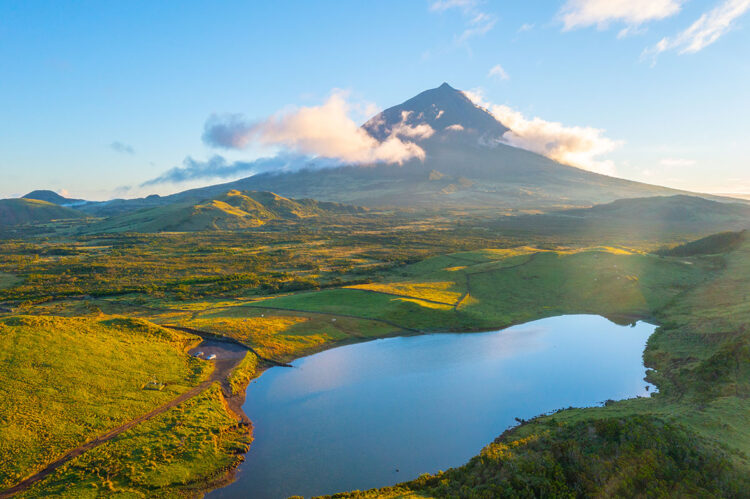
It is an island inhabited by approximately 14,000 people and is characterized by its natural habitat, formed by caves, lagoons, seaports, natural pools, and mountains. Historians believe that this island was discovered around 1480 by the first Portuguese colonizers who came from mainland Portugal.
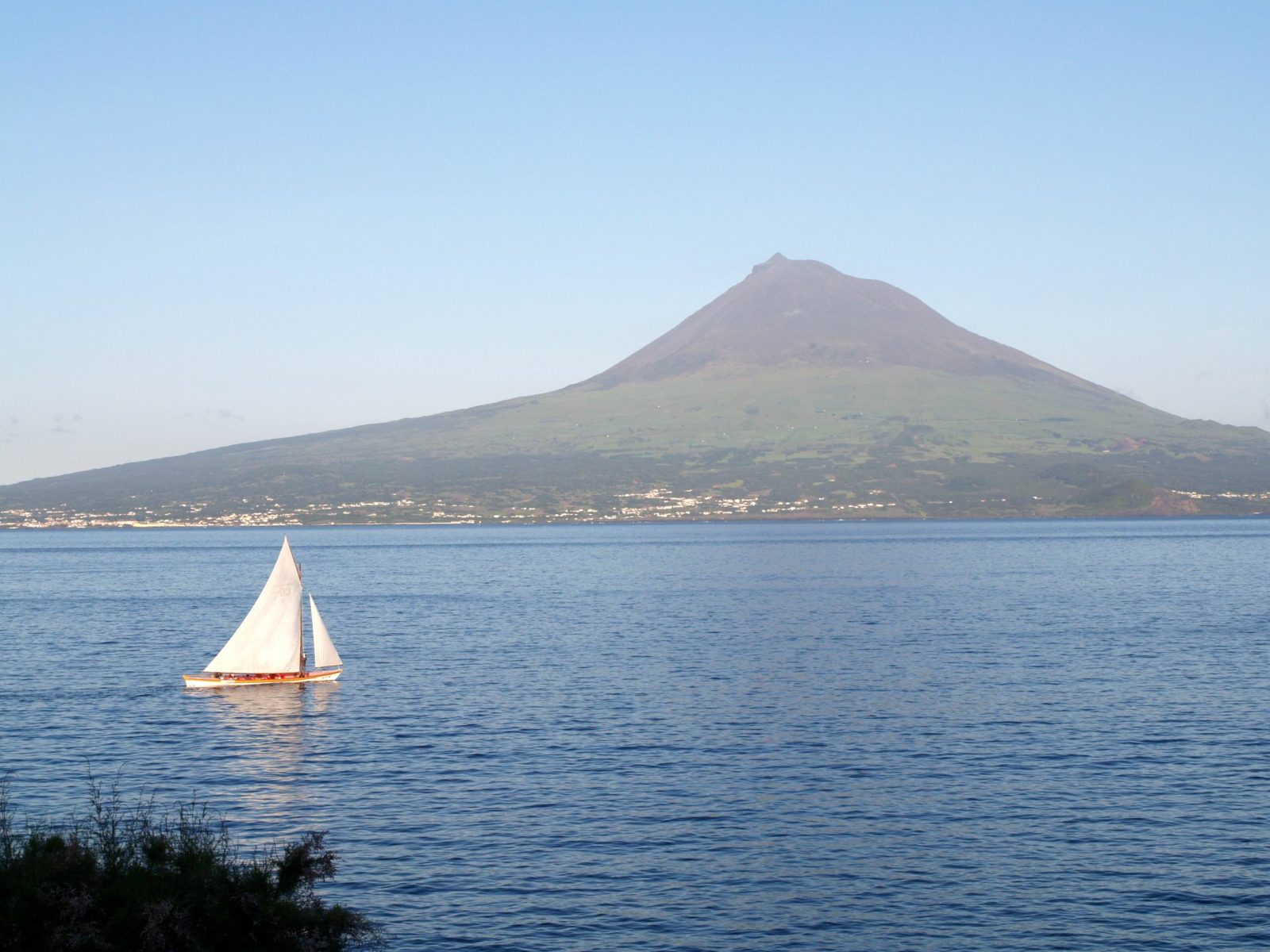
Fotografia de Mário Amaral
The activities developed on the island included wheat cultivation, indigo farming, and vine culture, notably the verdelho grape, which made the region one of the world’s main wine-producing areas, receiving the title of UNESCO World Heritage. Furthermore, the location has had a strong role in trade since early times, due to its port in the municipality of Madalena, allowing easy access to Faial Island and the rest of the world.
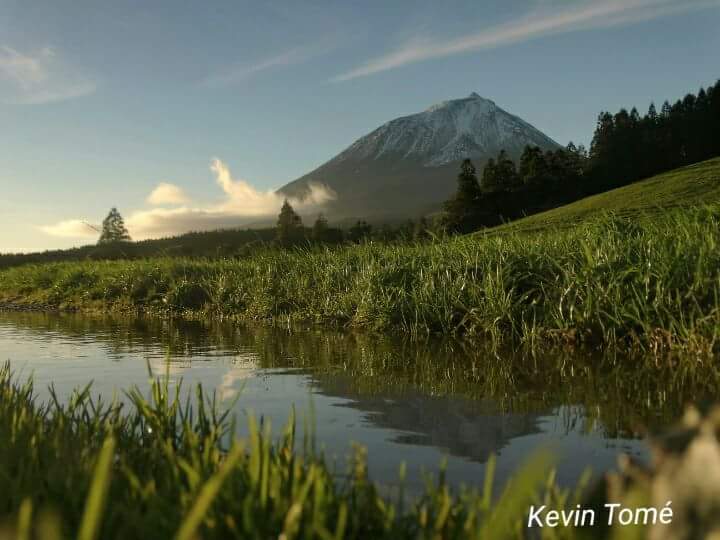
Fotografia de Kevin Tomé
However, by the end of the 18th century, the presence of American whalers in the vicinity of the Azores influenced one of the main activities in the region, which lasted for a long time and became essential for the sustenance of the population: whaling. Nowadays, this activity has been converted into mere observation, attracting tourists from around the world to observe whales and other cetaceans.
Pico Island is a must-visit for all nature lovers. Check out some of the main points of interest to visit below.
Índice de conteúdos [ocultar]
- Lajes do Pico
- São Roque do Pico
- Madalena do Pico
- Whaling Industry Museum
- Wine Museum
- Cultural Landscape of the Vineyard of Pico
- Frade Mill
- Morricão Windmill
- Gruta das Torres
- Pico Mountain
- Natural Pools of Criação Velha
- Natural Pools of Lajes do Pico
- Lagoa do Caiado
- Lagoa do Peixinho
- Lagoa da Rosada
- Prainha do Norte Forest Park
- Lagoa do Capitão
- Furna do Frei Matias
- Center for Arts and Marine Sciences
- Fort of Santa Catarina
- Ponta da Ilha Lighthouse
- Dolphin and Whale Watching
Lajes do Pico
This is the oldest location on the island, being the first region to receive settlement, with one of the most active ports during the peak of whaling.
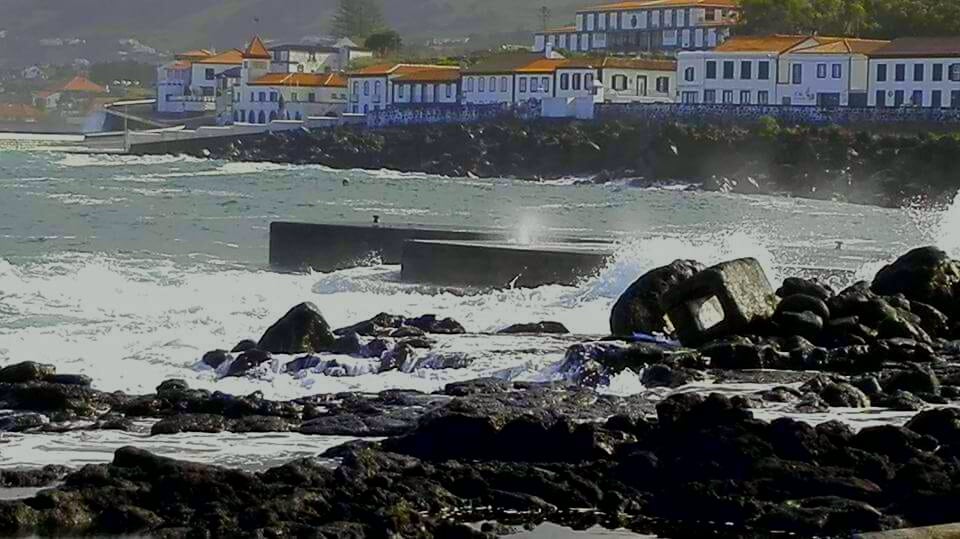
Fotografia de Lidia Magalhaes
The urban center is the main highlight of Lajes do Pico, its architecture harkens back to the 16th century, featuring several important historical landmarks, such as the Mother Church, the Franciscan Convent, the Hermitage of Saint Peter (one of the first constructions in the locality), and the Church of Our Lady of Conception, notable for its 16th-century alabaster statue, and the SIBIL Whaling Factory, among other attractions.
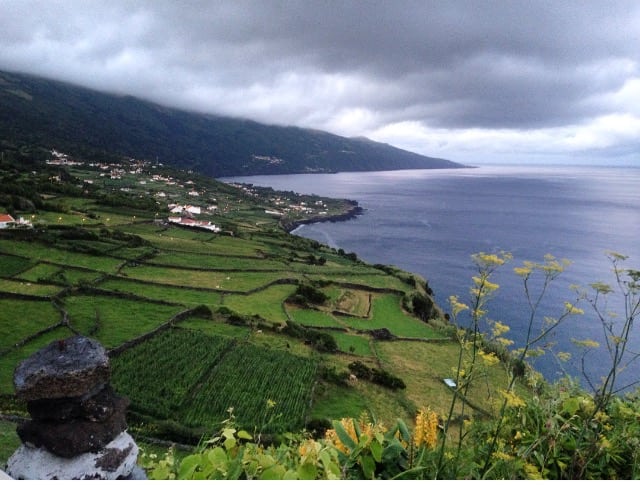
Fotografia de Soraia Nogueira
The history of Lajes do Pico has always been closely linked to whaling activities, which have undergone significant changes over time, from hunting to observation.
Visitors interested in learning more about this typical regional activity can visit the Whalers’ Museum. It is noteworthy that throughout the last week of August, the Whalers’ Festival is celebrated, which began in 1883, after a vow made by the whalers to Our Lady of Lourdes.
It is a great festival for all who want to have fun, featuring traditional whaleboat races.
Another interesting point is the Fajã Lávica of Lajes do Pico, formed by basaltic flows emitted from a cone near Cabeço do Geraldo.
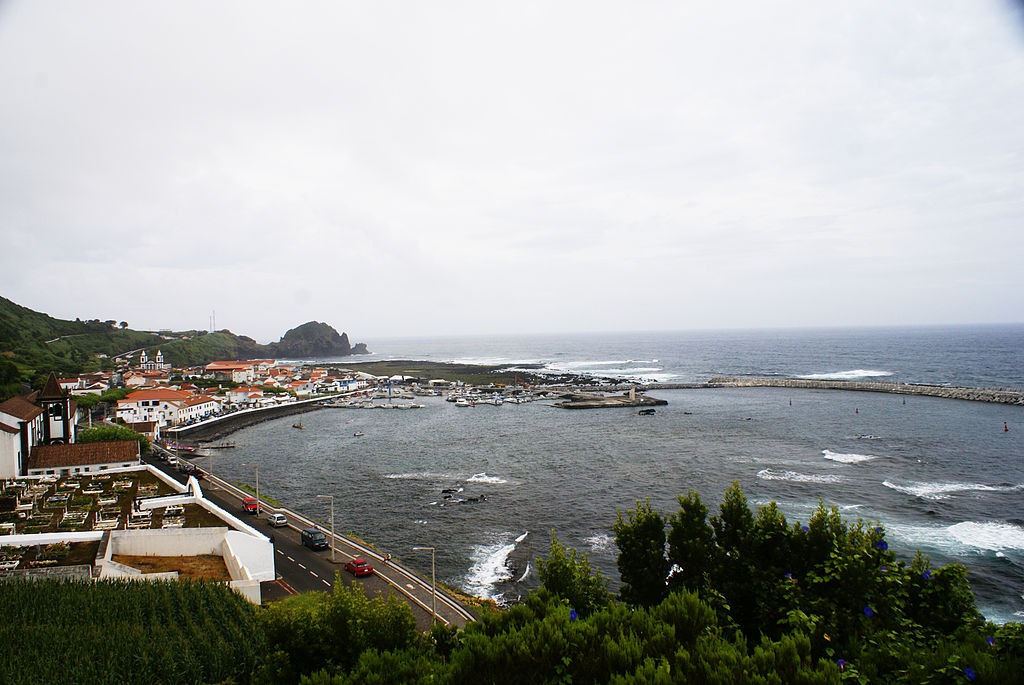 Photo by José Luís Ávila Silveira/Pedro Noronha e Costa
Photo by José Luís Ávila Silveira/Pedro Noronha e Costa
The lava flows were responsible for the formation of the lava delta, which increased the total area of the island. To better observe this geological phenomenon, it is recommended to go to the viewpoint along the regional road to better observe this priority geosite of great regional, scientific, educational, and tourist value.
Therefore, do not miss out on visiting Lajes do Pico, and enjoy all the Azorean nature that this locality offers through walking trails, natural pools, ocean diving, cetacean watching, views of the Pico mountain, and much more.
São Roque do Pico
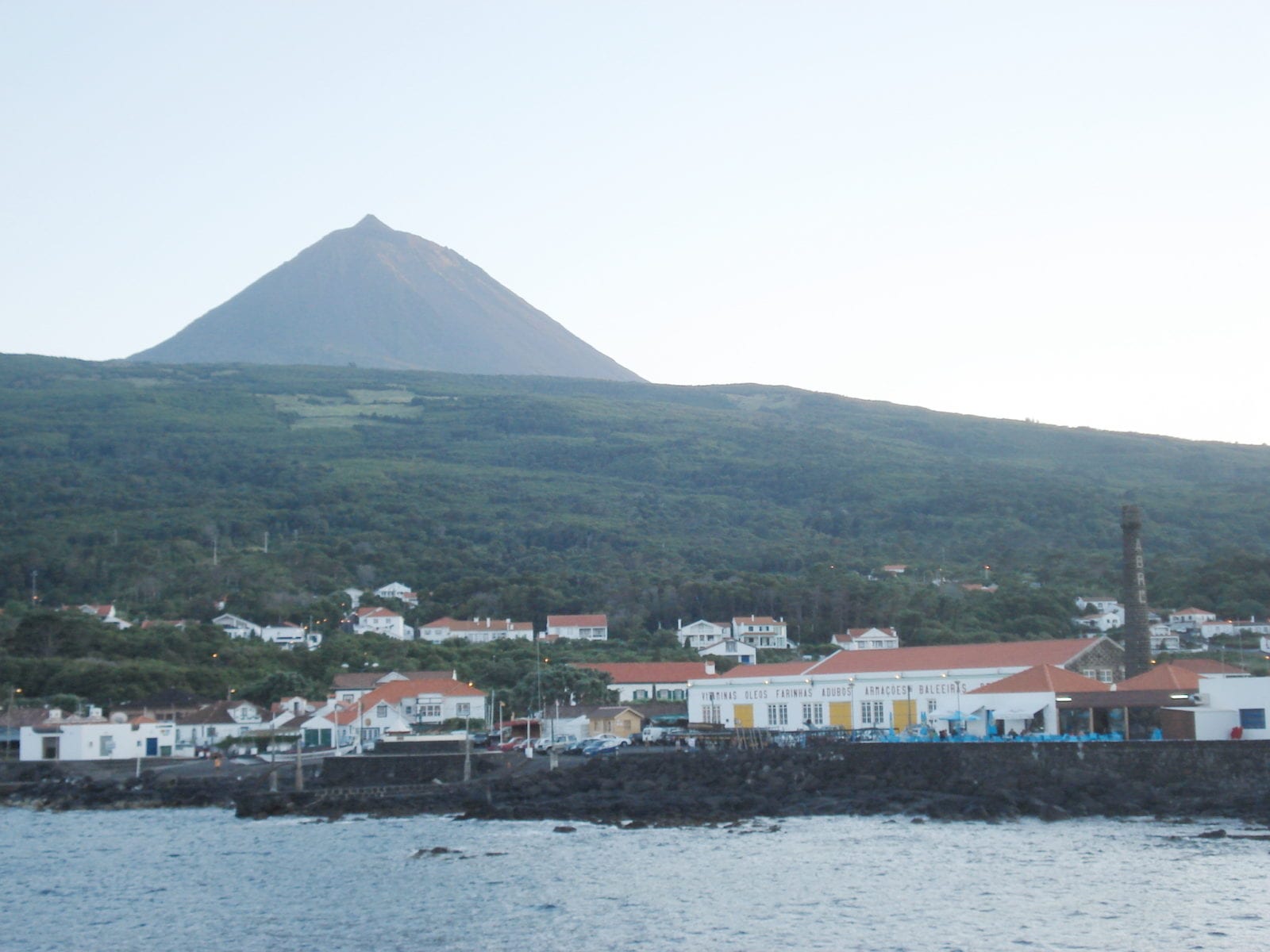 Photo by Ruben JC Furtado
Photo by Ruben JC Furtado
Located on the northern coast, the town of São Roque do Pico, like Lajes do Pico, also had a large part of its history linked to whaling, with a commercial port that was extremely important for the local economy and sustenance, producing various products derived from cetaceans.
Whaling activities can be better understood by visiting the Whaling Industry Museum, which is located at the port. Additionally, there are three preserved whaleboats at the pier that are part of the monument built to the harpooners.
The rich heritage of the town includes the City Hall and the Convent of Saint Peter of Alcântara, built in the 18th century, with an interior decorated with tiles and baroque altars, and a façade adorned with an arcade that extends under the bell tower.
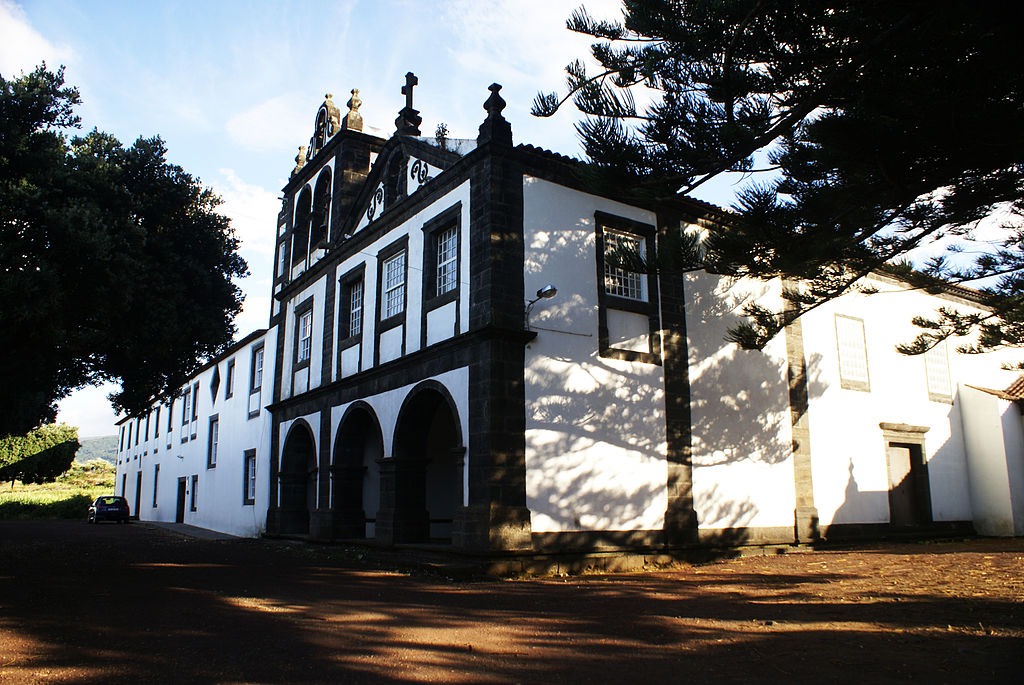 Photo by José Luís Ávila Silveira/Pedro Noronha e Costa
Photo by José Luís Ávila Silveira/Pedro Noronha e Costa
Also part of this heritage is the Mother Church, built in 1776, with a collection of high-quality Renaissance and Baroque images.
During the last weekend of July, São Roque do Pico celebrates the Cais Festival, which features traditional performances, musical shows, and a parade of floats as its main attractions.
This region is highlighted by its beauty, represented by colors and atmosphere, especially with the dark volcanic soils and rocks, referred to by many as “mysteries,” and the lush green vegetation mixed with colorful plants.
The Lagoons of Capitão and Caiado are standout attractions, as well as the Municipal Garden. Certainly, São Roque do Pico delights us with its fascinating nature and should not be left out of any travel itinerary.
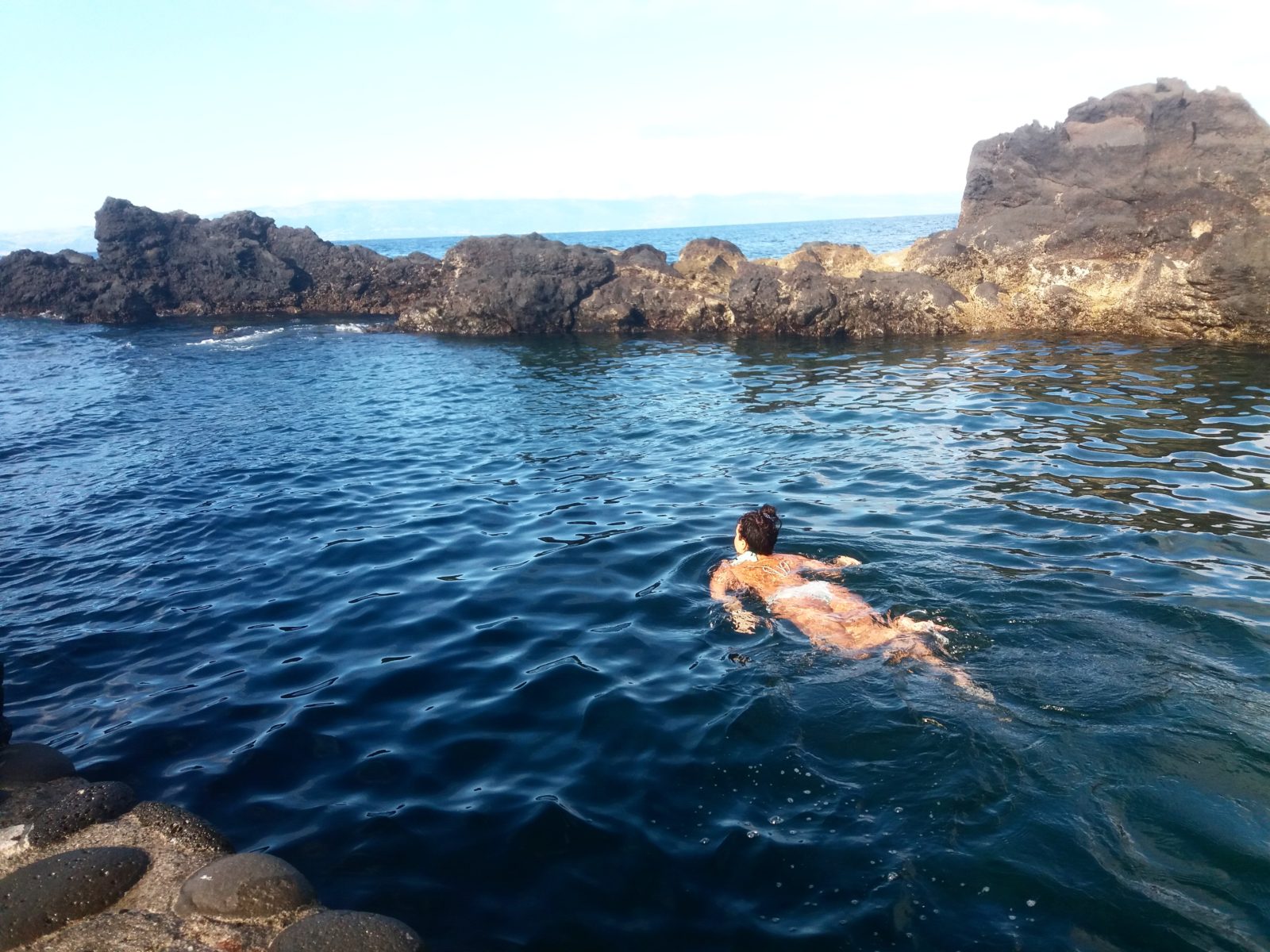
Fotografia de Cátia Almeida
Madalena do Pico
Located at the western tip, the town of Madalena do Pico was named the City of Wine 2017, simply for being a major producer of the famous Azorean Wine, the verdelho variety, which is the essence of the local lifestyle, thanks to favorable climatic conditions and the peculiarities of volcanic soils.
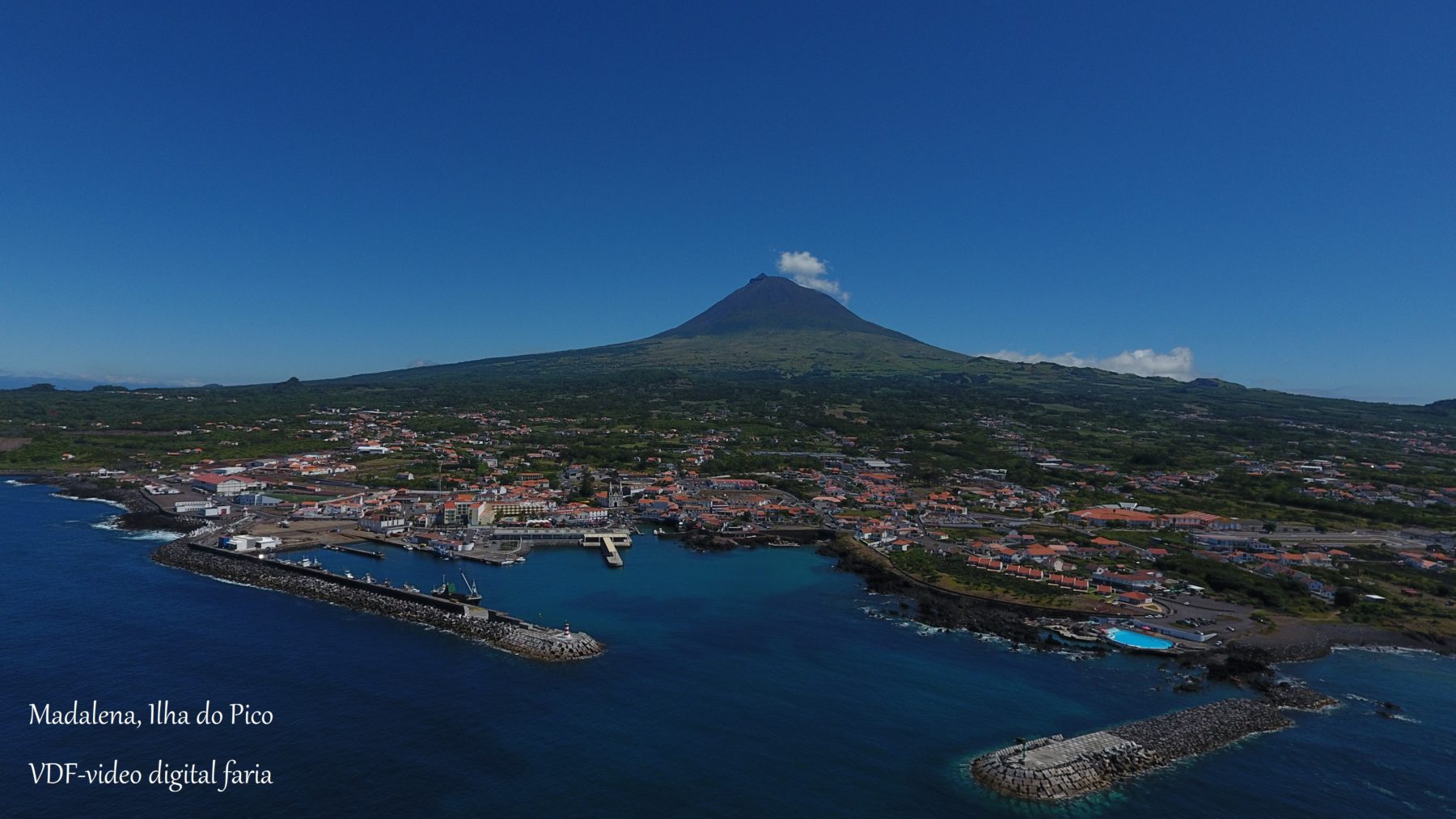
Fotografia de António Faria
This has led the region to be classified as a World Heritage Site by UNESCO, being one of thirteen wine regions worldwide that uphold this important title. To learn more about these facts, visit the Wine Museum.
Historically, Madalena has always developed agriculture, livestock, and fishing, resulting in enormous success for regional trade, especially due to its maritime port and proximity to the neighboring island of Faial. This can be easily observed in the local structure, which evokes agricultural life, as well as the architecture of the buildings, wineries, warehouses, and vineyards.
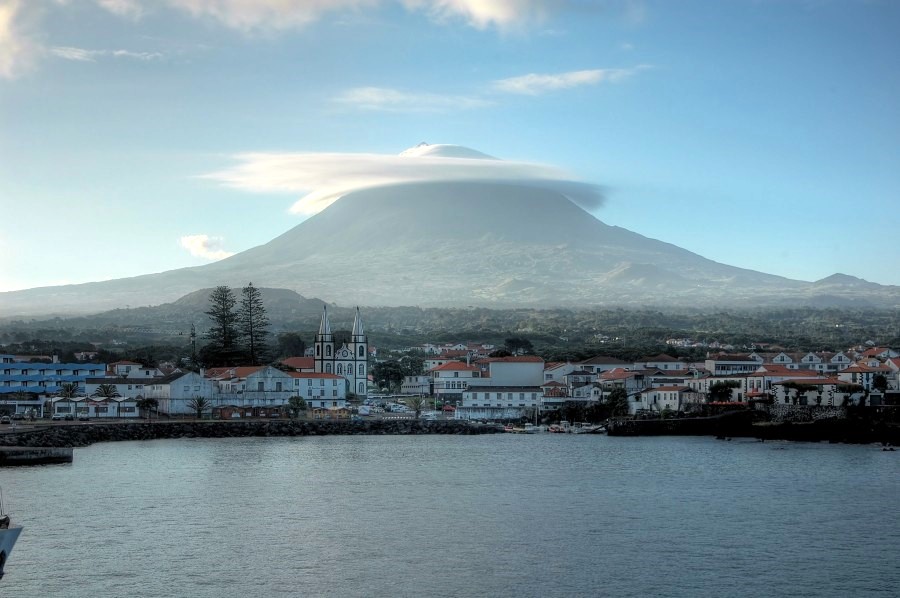 Photo by Christer Johansson
Photo by Christer Johansson
The historical center of Madalena is another must-visit tourist point, where the Church of Santa Maria Madalena is located, featuring twin towers crowned with hexagonal bases, in addition to a clock dating back to the 19th century. It is worth taking a stroll through the eccentric streets of the center, such as Conselheiro Terra Pinheiro Street and Ouvidor Medeiros Street.
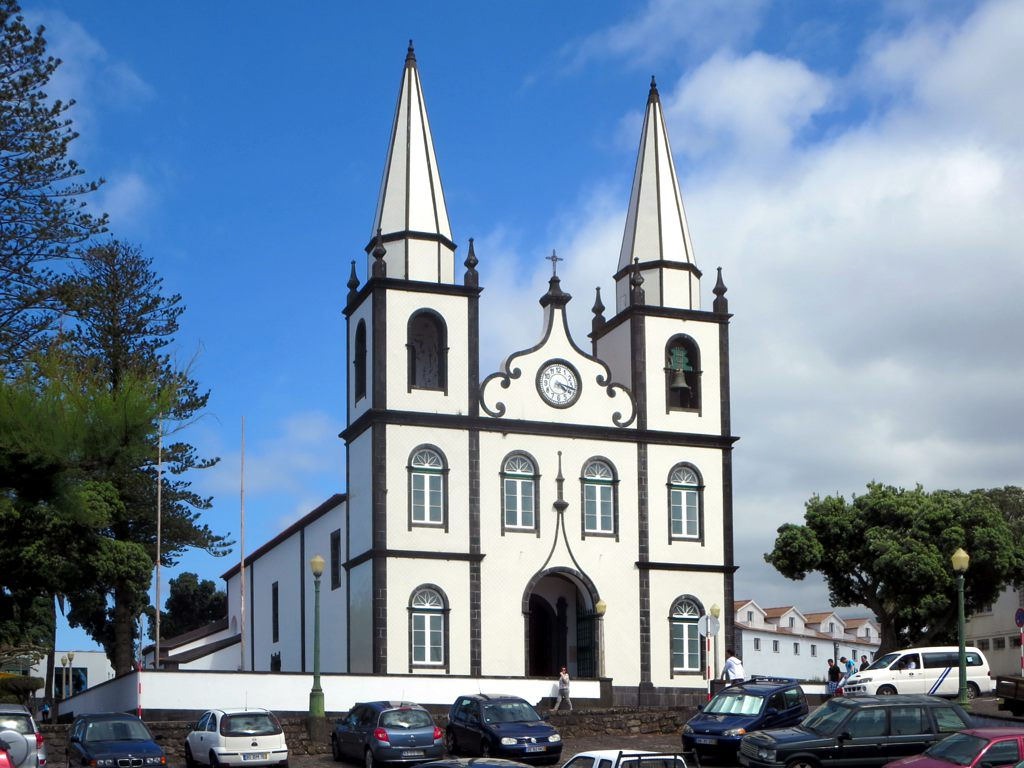 Photo by David Stanley
Photo by David Stanley
For those who are on Faial Island, Madalena is 5 miles from the City of Horta, a nautical trip that takes approximately 15 to 30 minutes, depending on the vessel used. For those coming from São Jorge Island, the trip is 1 hour, departing from Velas. It is a village worth visiting, full of history and international achievements.
Also see: Places to visit in Madalena >
Whaling Industry Museum
Located in the former Whaling Factory “Armações Baleeiras Reunidas Lda.” in the municipality of São Roque do Pico, the Whaling Industry Museum is classified as the first public industrial museum in the entire Azores archipelago, covering a total area of approximately 1,200 m².
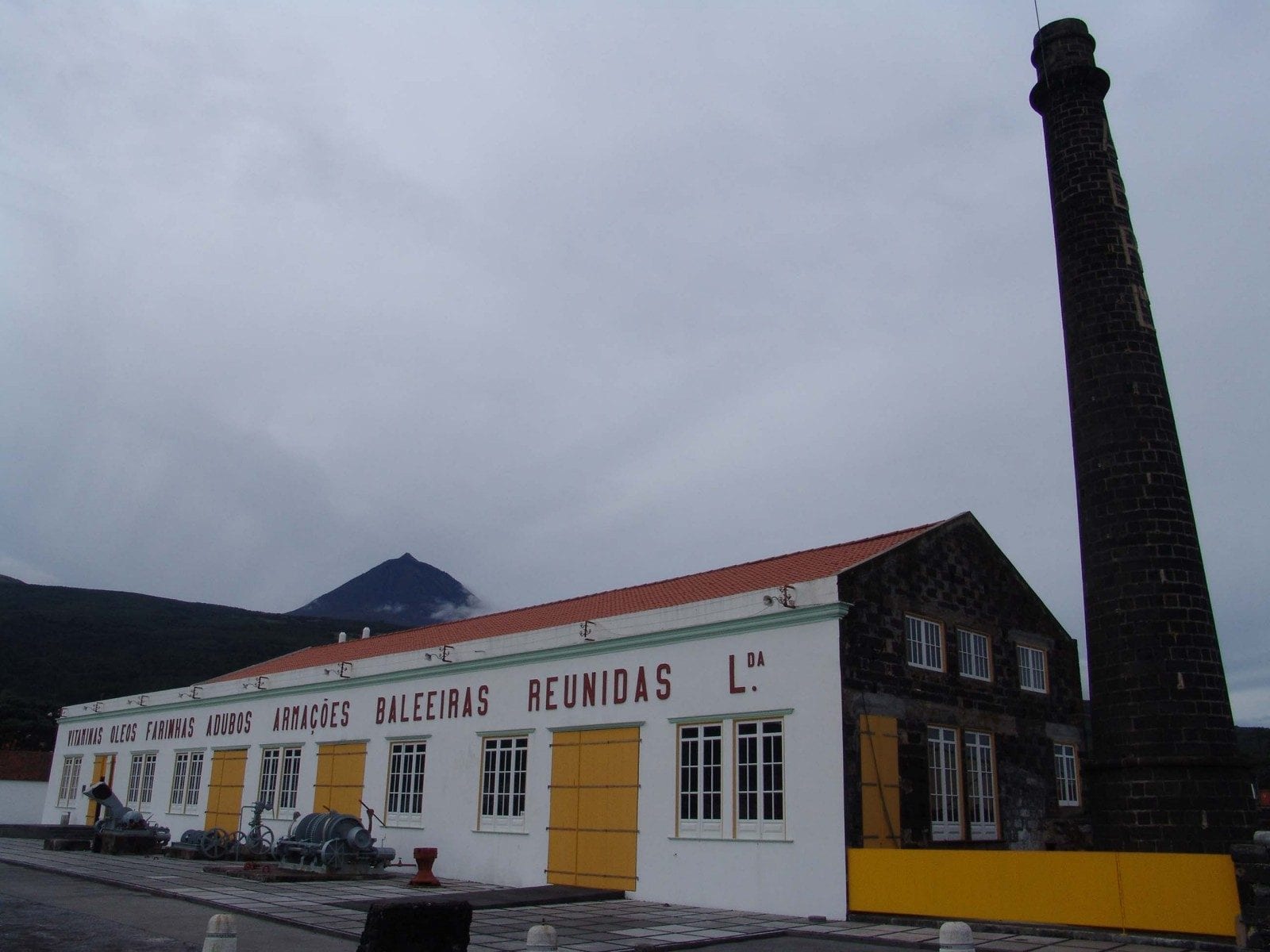 Photo by Museus do Pico
Photo by Museus do Pico
The location features an interesting collection of photographic records from the past, showcasing how people lived and depended on this industry for their own survival through whale and sperm whale fishing.
It is important to emphasize that this activity, which marked the cultural, economic, and ethnographic level of the population of this Azorean island, has been converted into an observation activity, given that the preservation of animal life has become fundamental. Be sure to check out the exhibitions and films of the whaling saga displayed at the museum.
Address
Rua do Poço
9940-361 São Roque do Pico
Hours
Summer (April 1 to September 30)
Tuesday to Sunday: 10:00 AM – 5:30 PM
Closed on Mondays
Winter (October 1 to March 31)
Tuesday to Sunday: 9:30 AM – 5:00 PM
Closed on Mondays
Contacts
Phone: (+351) 292 642 096
Email: museu.pico.info@azores.gov.pt
Wine Museum
Located near the center of Madalena, the Pico Wine Museum is actually a hostel that belongs to the interior of a winery and an ancient Carmelite convent.
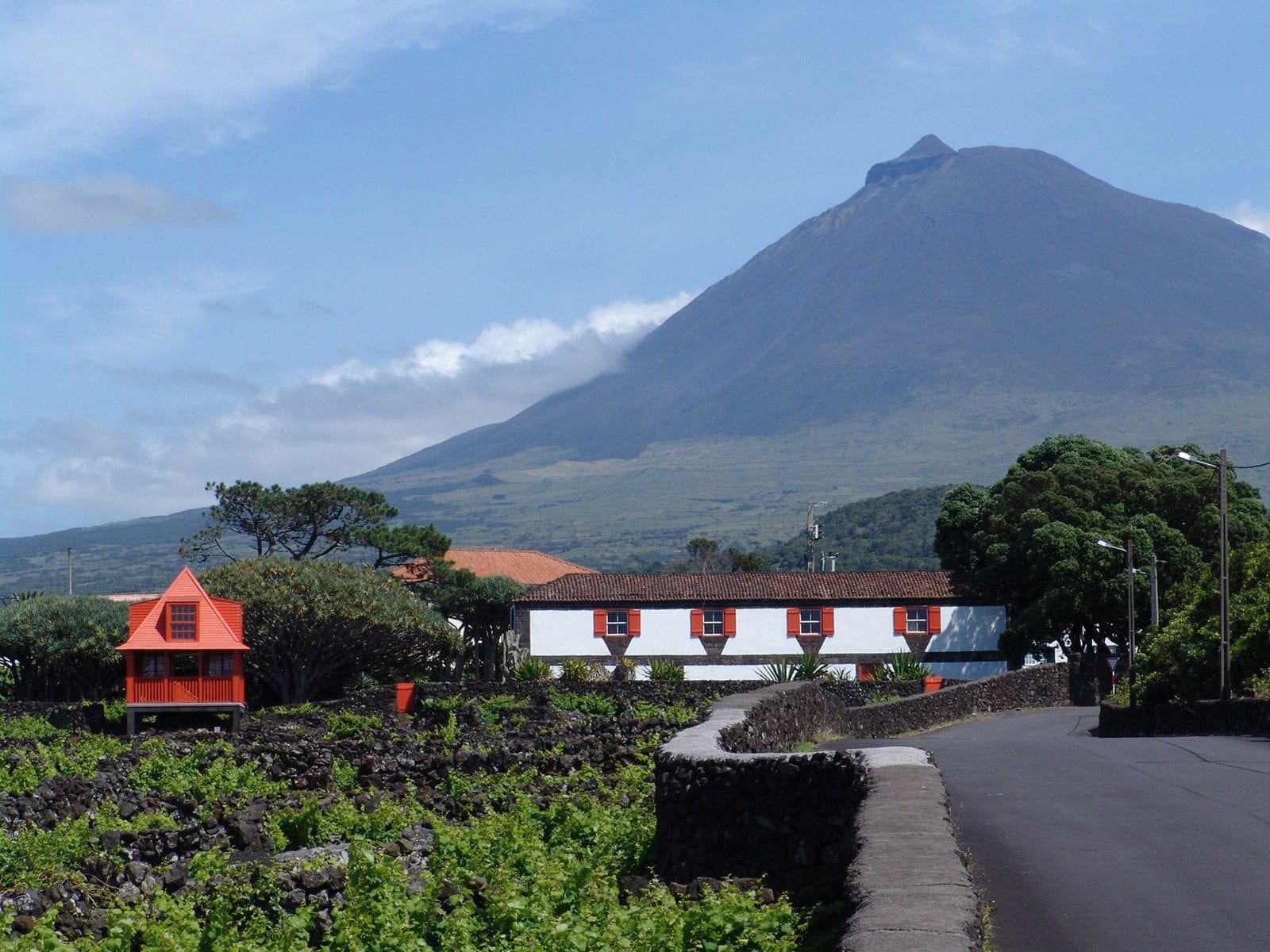 Photo by Museus do Pico
Photo by Museus do Pico
The main room of the building offers visitors a unique moment to relive the history of wine, starting from its culture during the golden age of verdelho, its exportation to countries like Brazil and Russia, and finally, its ruin caused starting in 1852 by devastating plagues such as oidium and phylloxera.
It is an excellent opportunity for anyone interested in learning more about the wine history of Pico, in addition to being a very pleasant place with well-organized exhibitions. It is worth noting that in the museum garden, there are several dragon trees, one of which is over 400 years old.
Address
Rua do Carmo
9950-364 Madalena do Pico
Hours
Summer (April 1 to September 30)
Tuesday to Sunday: 10:00 AM – 5:30 PM
Closed on Mondays
Winter (October 1 to March 31)
Tuesday to Sunday: 9:30 AM – 5:00 PM
Closed on Mondays
Contacts
Phone: (+351) 292 622 147
Email: museu.pico.info@azores.gov.pt
Cultural Landscape of the Vineyard of Pico
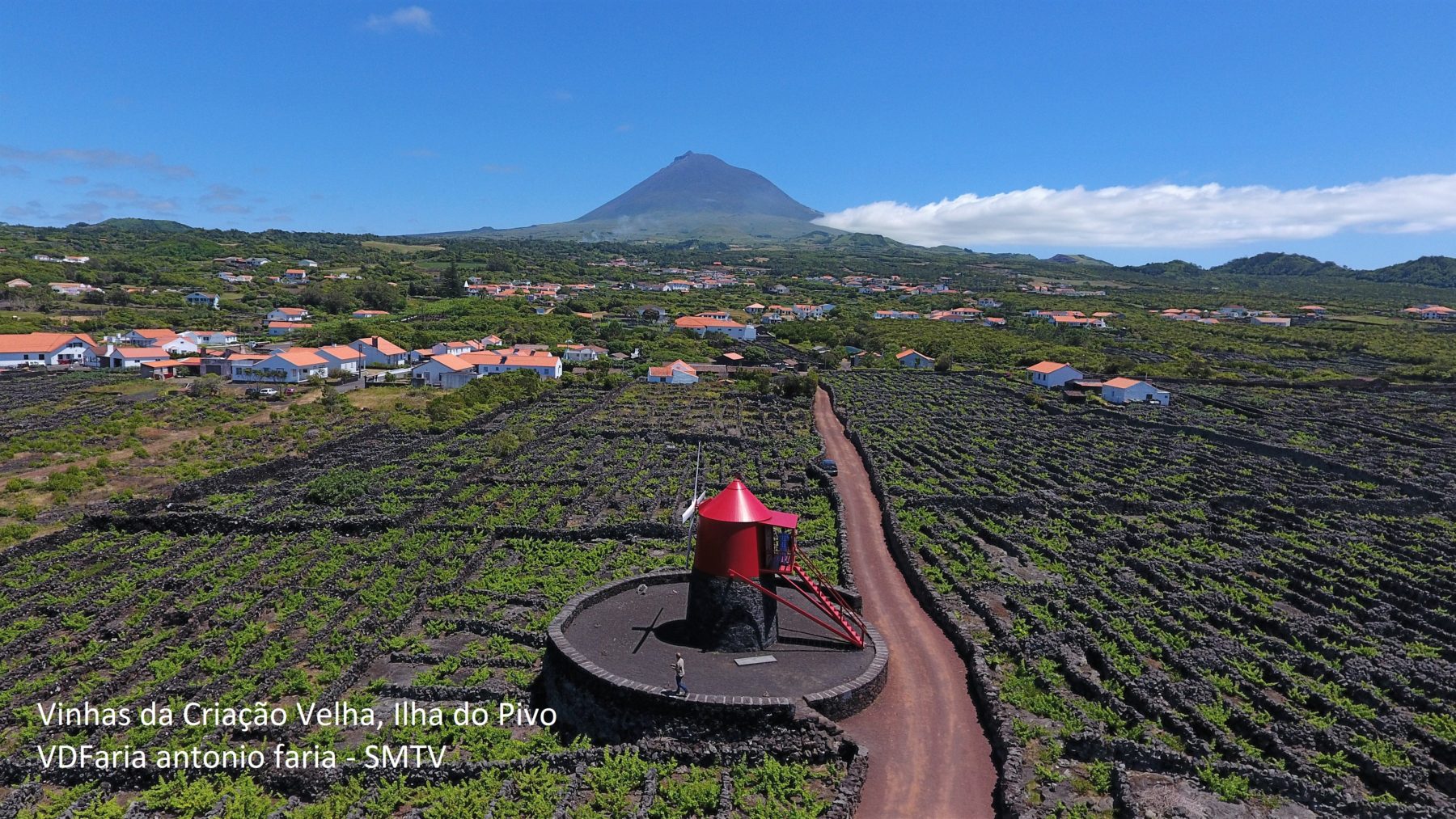
Fotografia de António Faria
Classified as a UNESCO World Heritage Site in 2004, the Cultural Landscape of the Vineyard of Pico covers a total area of 987 ha and a buffer zone of 1,924 ha, partially encompassing the northern and southern coasts, and the western coast of Pico, all surrounded by a rich fauna and flora, with several endemic and rare species and communities, within a permanently protected area.
Also see: Breathtaking images of the “Vineyard Landscape” on Pico Island
Frade Mill
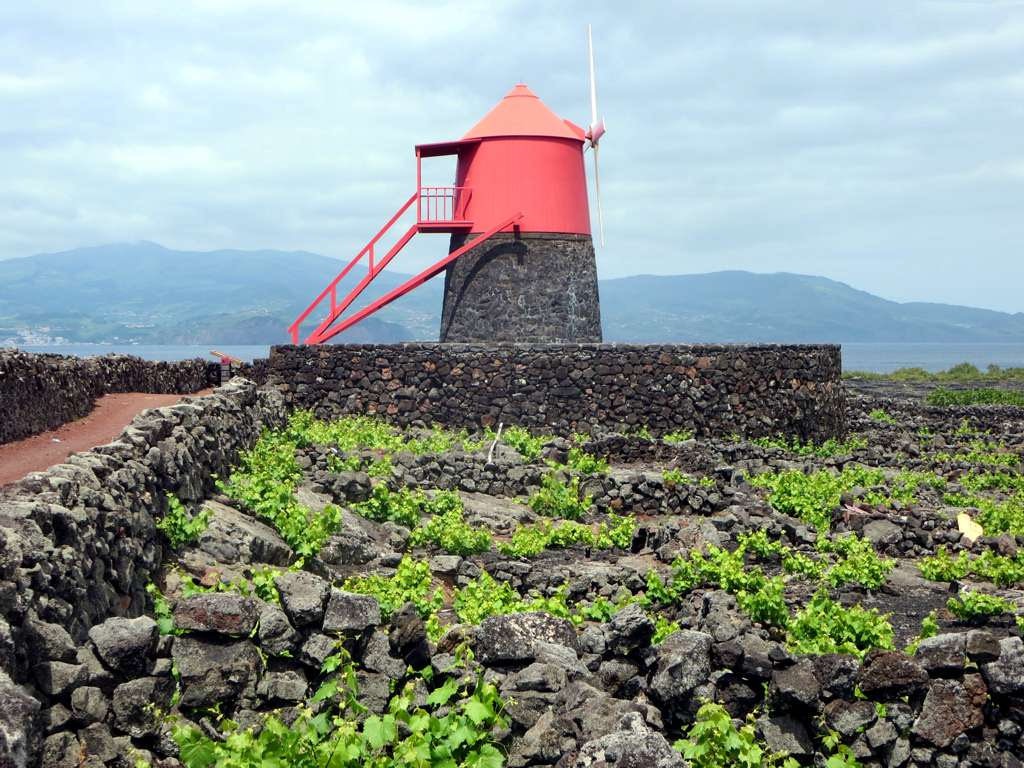 Photo by José Luís Ávila Silveira/Pedro Noronha e Costa
Photo by José Luís Ávila Silveira/Pedro Noronha e Costa
Located in the Lajido da Criação Velha, in an emblematic area categorized as a World Heritage Site, the Frade Mill underwent a reconstruction process in 2003 and 2004 after suffering significant degradation throughout its history.
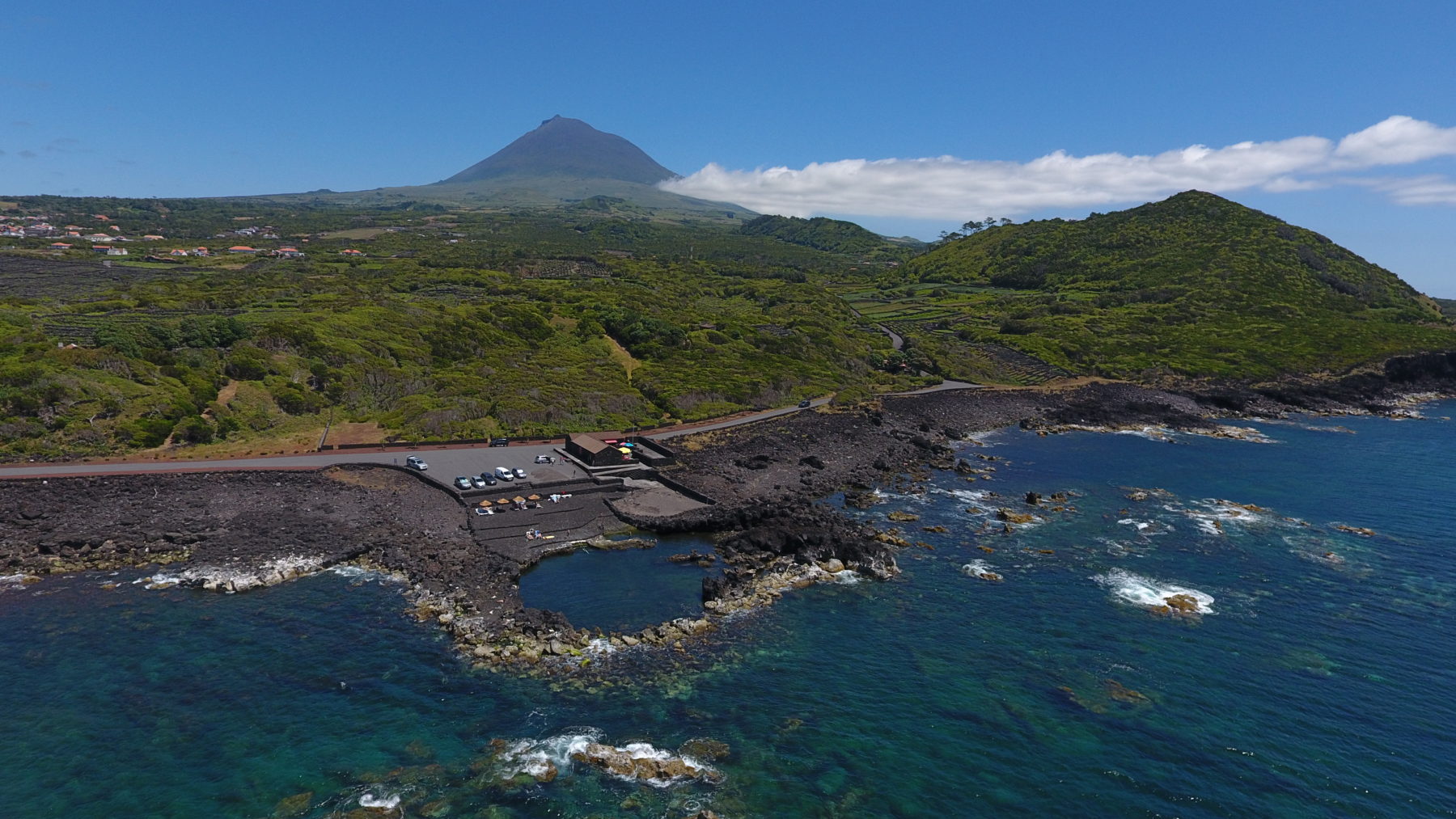
Fotografia de António Faria
The reconstruction aimed to inspire a copy identical to the original mill, thus maintaining its primary function of milling grains, which was widely used to support the settlements of the island during the early colonization period when agriculture played an important role in the economy.
The mill is located 5 km from the center of Madalena and attracts attention for its privileged view, with a surprising reticulated landscape of walls. It is an excellent place for photography.
Morricão Windmill
The Morricão Windmill belongs to the parish of Calheta de Nesquim, in the municipality of Lajes do Pico, and is composed of a stone base and a movable wooden cover, with its wooden part being reddish, very characteristic of the architecture of the time.
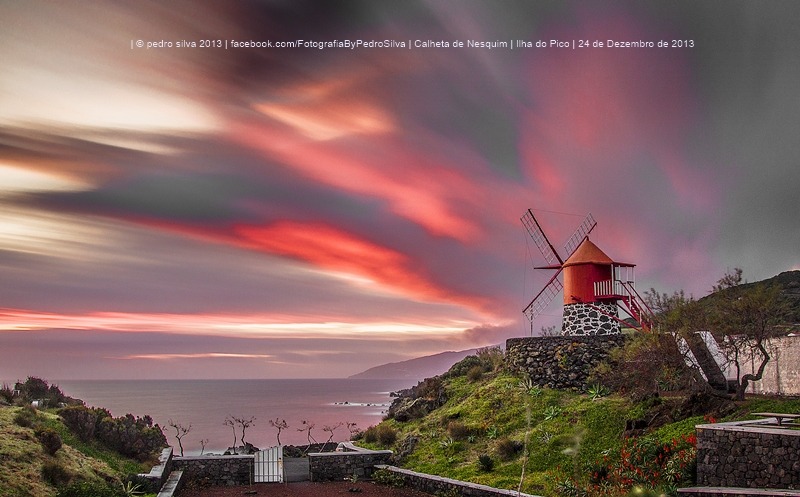 Photo by Pedro Silva
Photo by Pedro Silva
This region where the mill is located is considered a leisure area, where it is possible to camp and even swim, as it is very close to the bathing area of Poça das Mujas. The location has infrastructure support for those interested in picnicking, with bathrooms and a playground.
It is an excellent outing to do in a group or with family.
Gruta das Torres

Discovered in the early 1990s, the Gruta das Torres is the largest lava tube in Portugal, located in the parish of Criação Velha, in Madalena.
Its discovery was so important that the cave was classified as a Regional Natural Monument by the Regional Government of the Azores in 2004.
It has a length of 5,150 meters, with the main tunnel extending over 4,480 meters, reaching up to 15 meters in height.
Visiting the Gruta das Torres is not free and encompasses about 450 meters inside. However, the quantity and variety of geological formations inside the cave attract attention, highlighted by the tour guide and also by a film shown before entry to better understand its history.
It is important to make a reservation and wear appropriate footwear for the visit. It is an incredible experience and should certainly be part of your itinerary.
Hours
From November 1 to March 31
Tuesday to Friday from 10:00 AM to 5:00 PM
Saturdays and Holidays from 2:00 PM to 5:30 PM
Closed on Sundays and Mondays
From April 1 to October 31
Every day from 10:00 AM to 6:00 PM
Closed on Easter Sunday
Guided Tours
From November 1 to March 31
Tuesday to Friday: 10:30 AM | 12:00 PM | 2:00 PM | 3:30 PM
Saturdays and Holidays: 2:30 PM | 4:00 PM
From April 1 to May 31 and from October 1 to 31
Every day: 10:30 AM | 12:00 PM | 1:30 PM | 3:00 PM | 4:30 PM
From June 1 to September 30
Every day: 10:30 AM | 11:00 AM | 12:00 PM | 1:30 PM | 3:00 PM | 4:30 PM
Duration: 60 to 90 minutes
Maximum number of people per visit: 15
Price
Child (0 to 6 years): Free
Junior (7 to 14 years): €4.00
Adult (15 – 64 years): €8.00
Senior (+ 65 years): €4.00
Family (2 adults and children up to 14 years): €16.00
Resident in the RAA*: Free
Address
Caminho da Gruta das Torres
Criação Velha
9950 Madalena
Contacts
Phone: (+351) 924 403 921
Email: pnpico.grutadastorres@azores.gov.pt
Pico Mountain
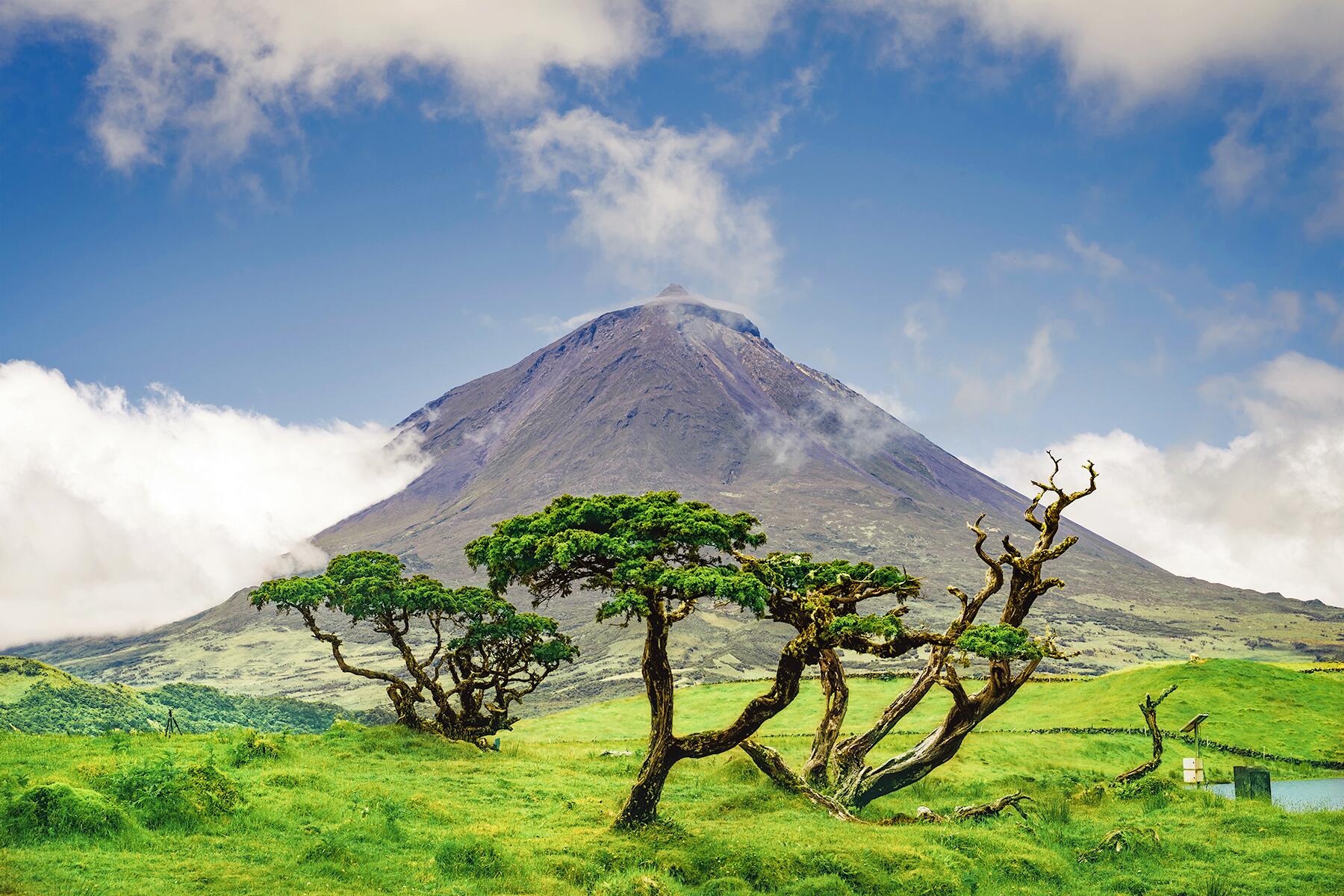
The highest point in Portugal and the third highest in the Atlantic, Pico Mountain stands at 2,351 meters and its entire area belongs to a nature reserve.
It is considered the main attraction for adventure seekers, but it requires a lot of physical preparation and appropriate equipment.
 Book here: climb to Pico Mountain with an overnight stay and guide included
Book here: climb to Pico Mountain with an overnight stay and guide includedAlso see: Climb and visit Pico Mountain – All the information you need
Natural Pools of Criação Velha
Located on the lush west coast of the island, in the parish of Criação Velha, municipality of Madalena, the Natural Pools of Criação Velha, also known as Praia da Criação Velha or Lajido, stand out for providing visitors with moments of leisure and contemplation of nature.
Their formation occurs through volcanic rocks of dark color, capable of forming a pleasant circular pool of clear and calm waters, all in contrast with the black basaltic rocks and the deep blue of the Atlantic Ocean.
The location has an area of fine dark sand and another of rock, ideal for resting and observing all the surrounding nature.
Natural Pools of Lajes do Pico
These natural pools are located on the southern coast of Pico, in the pleasant Bay of Lajes, being one of the most frequented by tourists seeking leisure on the southern island, especially due to its calm and crystal-clear waters that make the place a must-visit and safe, not to mention the breathtaking landscape surrounding it.
Access to the pools is quite easy, with good support infrastructure. For those who enjoy diving, this activity is ideal.
Lagoa do Caiado
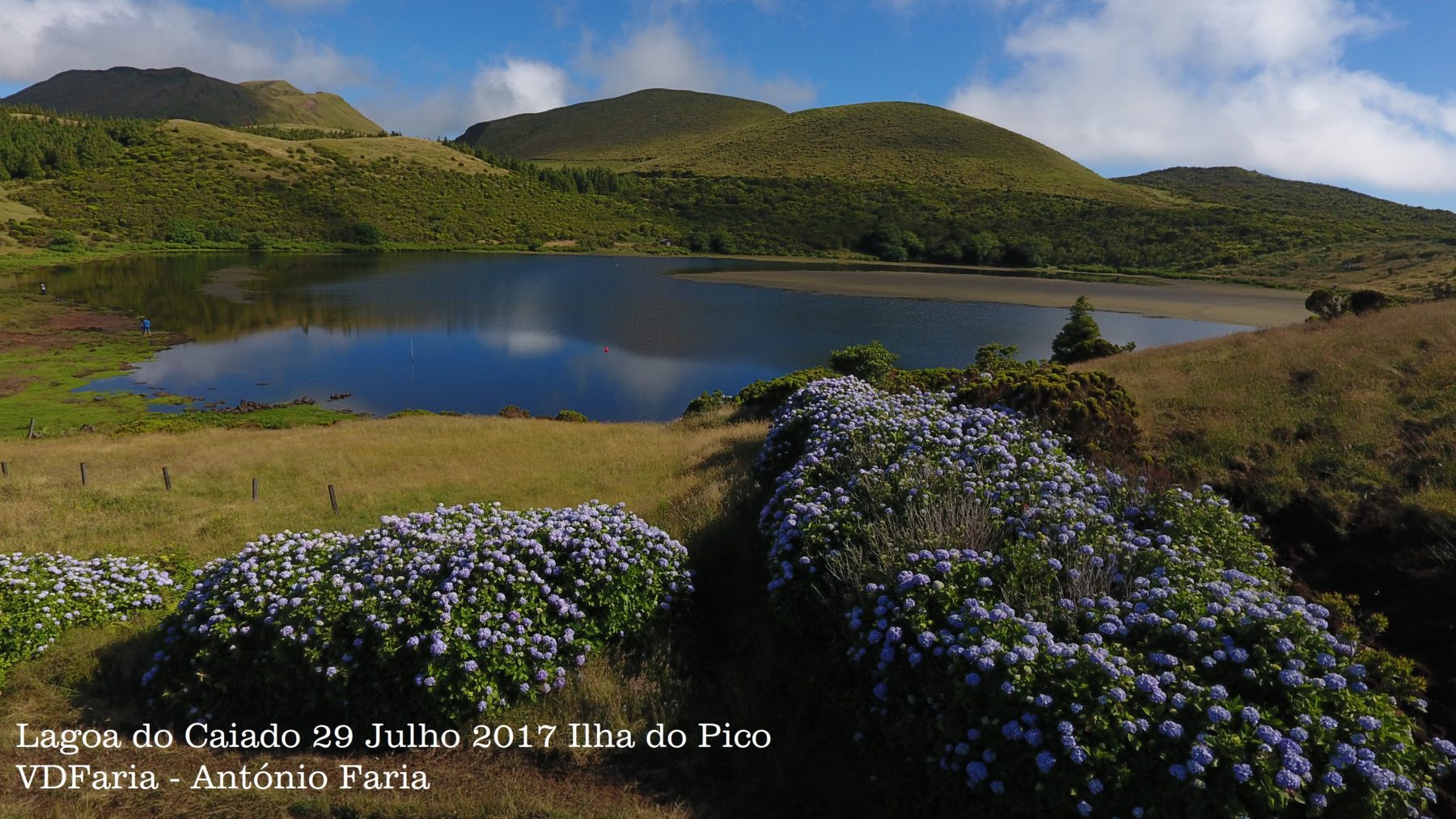
Fotografia de António Faria
The natural beauty is the main highlight of the Lagoa do Caiado, which, although located about 800 meters above sea level and subject to inclement weather (strong winds and fog), still receives many visitors, especially those who enjoy birdwatching.
It is part of a cluster of small lagoons in the Partial Natural Forest Reserve of Lagoa do Caiado in the central plateau.
The main species in the area are: moorhen, common snipe, common teal, great egret, yellow wagtail, and the Azorean finch. It is a very pleasant place and worth a visit.
Lagoa do Peixinho
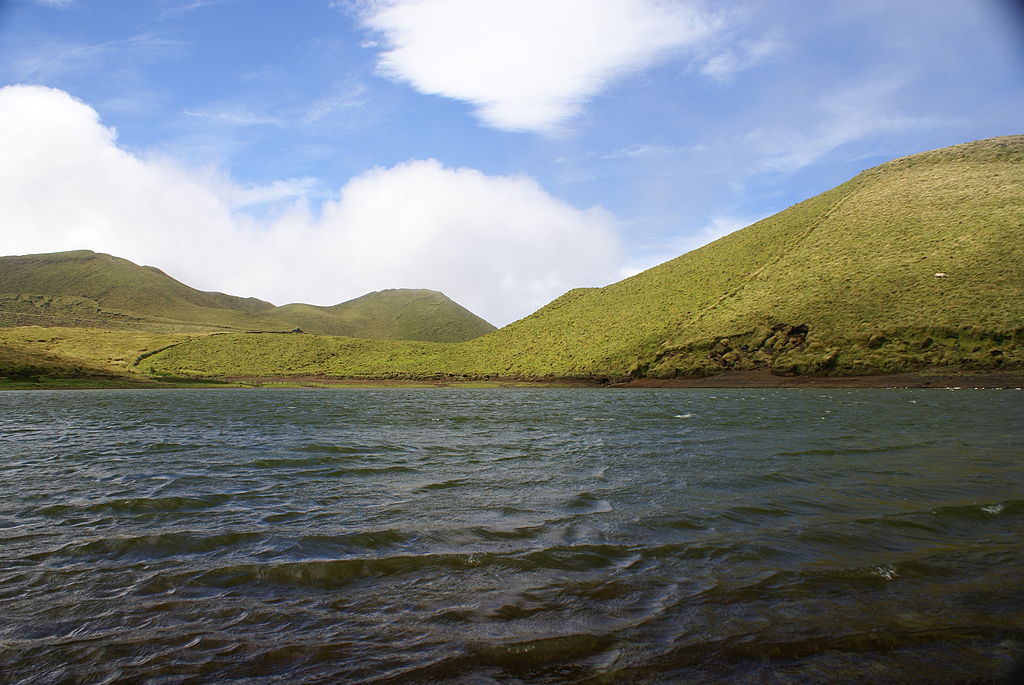 Photo by José Luís Ávila Silveira/Pedro Noronha e Costa
Photo by José Luís Ávila Silveira/Pedro Noronha e Costa
Classified as one of the largest lagoons on the entire island, the Lagoa do Peixinho is located in the municipality of São Roque do Pico, in the central plateau area, close to the Lagoas do Caiado and Rosada.
It occupies a depression area between various volcanic cones and is filled with vegetation characteristic of the region. The lagoon and its entire watershed are a good option for those interested in discovering some rarities, becoming a location where it is possible to observe and photograph some resident bird species, especially the aerial display of snipe during the breeding season.
Lagoa da Rosada
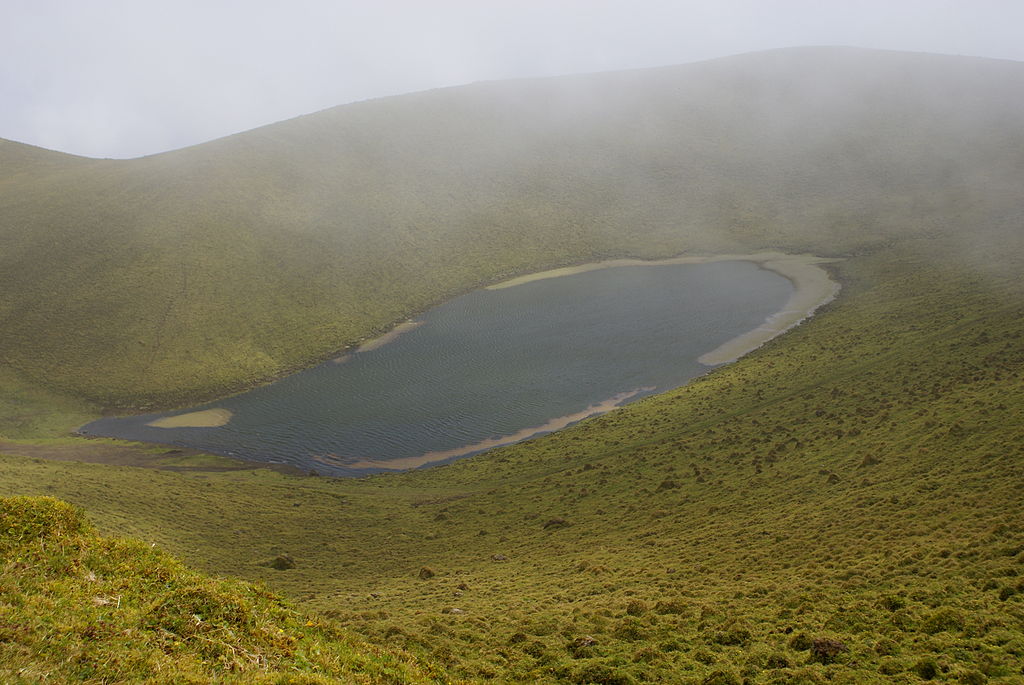 Photo by José Luís Ávila Silveira/Pedro Noronha e Costa
Photo by José Luís Ávila Silveira/Pedro Noronha e Costa
The Lagoa da Rosada is located on the eastern side of the island, and is part of the municipality of São Roque do Pico, its greatest highlight being the panorama.
This is because it is situated in a crater resulting from a scoria cone explosion, in addition to its surroundings containing vegetation typical of these geological phenomena, with a strong predominance of green due to exposure to high humidity levels on Pico, offering visitors a landscape that mixes natural beauty and tranquility.
If you are looking for a place of peace and tranquility, include Lagoa da Rosada in your itinerary.
Prainha do Norte Forest Park
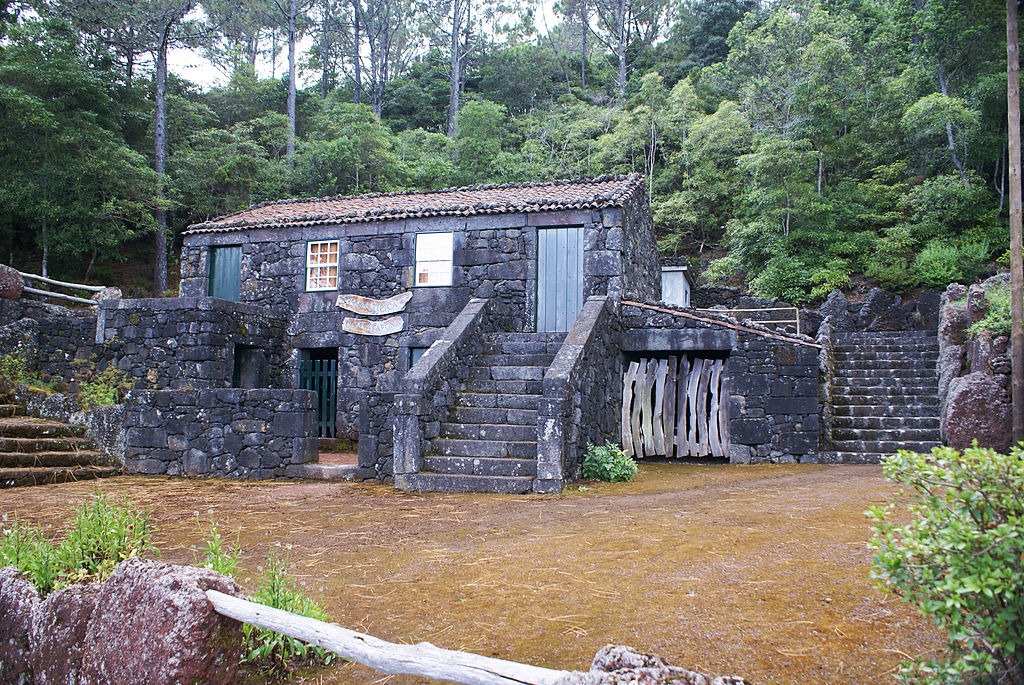
Photo by José Luís Ávila Silveira/Pedro Noronha e Costa
Located in the parish of Prainha, municipality of São Roque do Pico, this park covers 11.97 ha and extends for 2,068 meters, filled with endemic Azorean vegetation.
It is in a region known as Mysteries of Prainha, due to the lava flows from an eruption that occurred in the 16th century, which were unknown to the first inhabitants who did not know about the existence of active volcanoes in the area.
The forest park is an environment that provides tranquility and beautiful landscapes to visitors, extremely clean and well-maintained by public service. There are picnic areas, a mill, a viewpoint, a playground, a camping area, and a multi-sport field. If you enjoy walking, the park is excellent for walking and hiking trails.
Lagoa do Capitão
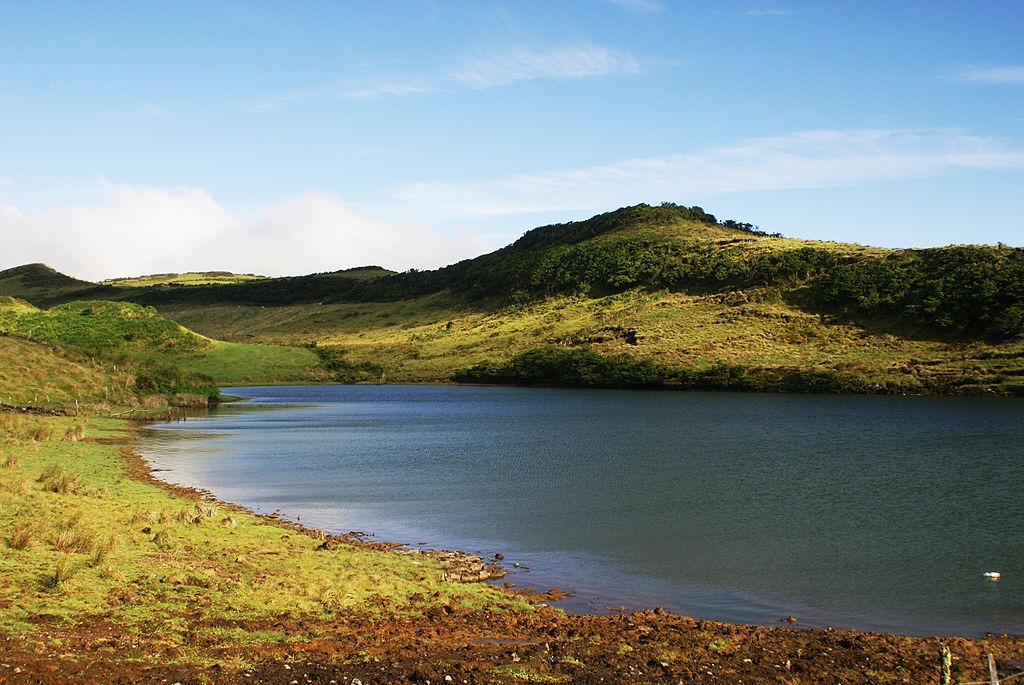 Photo by José Luís Ávila Silveira/Pedro Noronha e Costa
Photo by José Luís Ávila Silveira/Pedro Noronha e Costa
One of the best-known lagoons on the island, close to Pico Mountain, the Lagoa do Capitão receives many visitors throughout the year, mainly for its views of the Pico Volcano and the neighboring São Jorge Island.
What may seem like a problem, being situated about 826 meters above sea level and having unstable weather conditions, has never deterred tourists from visiting this Pico wonder, which boasts aquatic rarities and terrestrial species that can be easily observed in the autumn/winter period.
It is advisable to visit on clear days for better visibility.
Furna do Frei Matias
Located on the west side of the Natural Reserve of Pico Mountain, the Furna do Frei Matias is a lava tunnel that averages 650 meters in length, consisting of several entrances and forks.
What stands out most about this cave is its mythical space, where many believe that a hermit once lived in absolute solitude.
All this mystery attracts more and more tourists, due to its easy access, as it is close to the parish of Madalena. It is worth noting that in 2003, part of the cave structure collapsed, affecting its main entrance, necessitating the opening of a new entrance.
Center for Arts and Marine Sciences
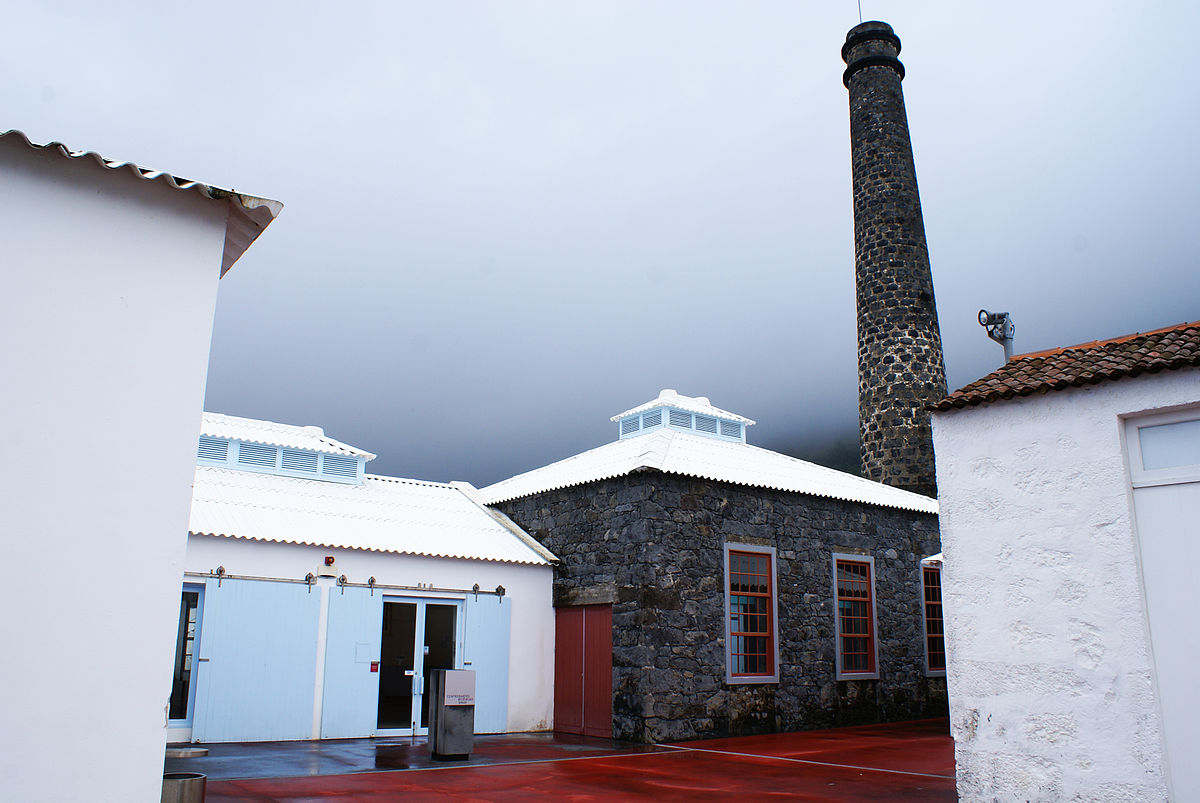
Photo by José Luís Ávila Silveira/Pedro Noronha e Costa
Housed in the former SIBIL whaling factory, which was responsible for transforming large cetaceans into oils and meals, its facilities were deactivated in the 20th century and underwent a significant recovery process by the Municipality of Lajes do Pico between 2005 and 2007, the Center for Arts and Marine Sciences offers visitors a collection of industrial equipment and multimedia exhibits about the factory, as well as the biology and ecology of whales.
Additionally, the Center also promotes artistic and cultural events, which are very interesting for all types of audiences, and it even has a shop, bar, and leisure space.
Hours
Monday to Friday from 9:00 AM to 6:00 PM.
Price
Admission: €2.50
Teen (12 to 18 years): €1.25
Seniors (65 years or older): €1.25
Organized groups (from 10 people): €1.25 per person
Children (up to 12 years): Free
Organized and authorized study visits: Free
Address
Rua do Castelo
9930-138 Lajes do Pico
Contacts
Phone: (+351) 292 679 330
Email: cacm_sibil@sapo.pt
Fort of Santa Catarina
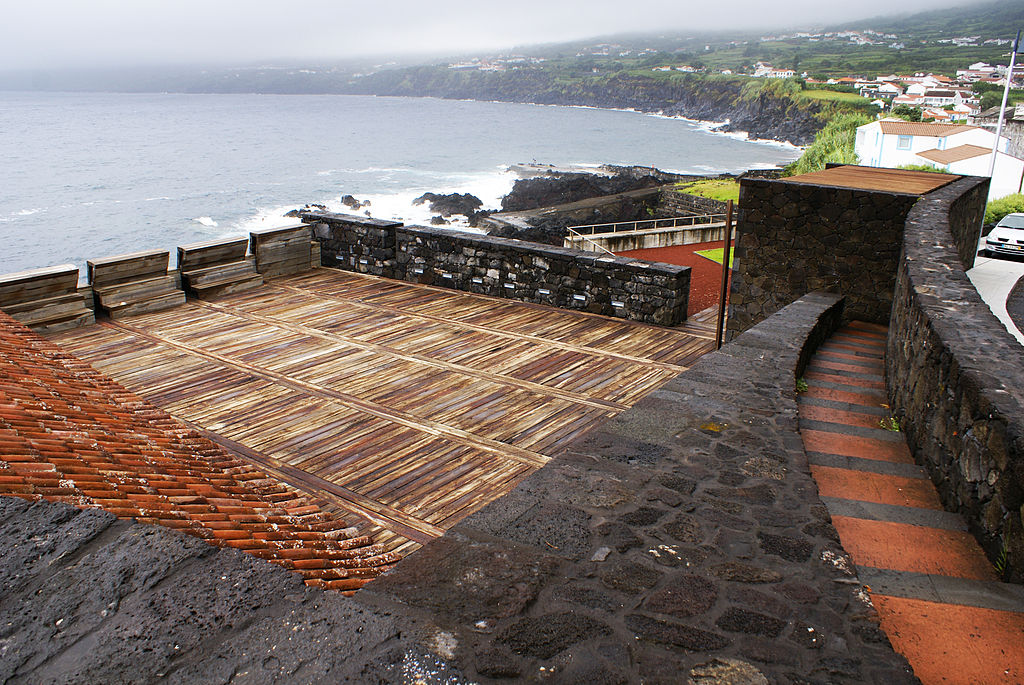
Photo by José Luís Ávila Silveira/Pedro Noronha e Costa
Located in the parish and municipality of Lajes do Pico, the Fort of Santa Catarina, or Castle of Santa Catarina, is a fortification aimed at defending the region’s anchorage against possible attacks common at the time.
Today, it is the only example of military architecture on the island. It is easily accessible, offering a beautiful view of the sea and the mountain, along with a shop where you can find regional products.
Ponta da Ilha Lighthouse
Built in 1946, this lighthouse is located in Manhenha, parish of Piedade, in the municipality of Lajes do Pico, and stands out for its U-shaped construction, with a tower in the center.
Its architectural and scientific ensemble are other great highlights of this largest and most emblematic lighthouse in Pico, in addition to being one of the most recent in the entire archipelago, operating since July 21, 1946.
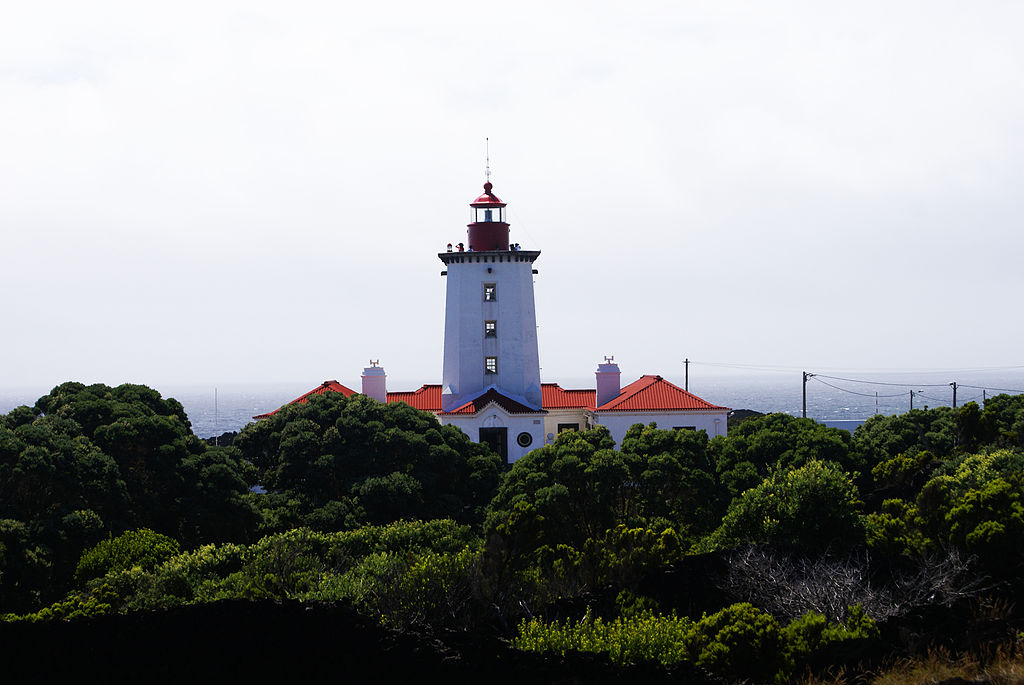
Photo by José Luís Ávila Silveira/Pedro Noronha e Costa
The lighthouse tower stands 19 meters tall, and its structure includes a residence for the lighthouse keepers. Its range is 22 miles (or 44.5 km), emitting three white flashes every 15 seconds.
The view is spectacular and fascinating; from the tower, one can see the sea to the north and south of Pico, as well as the island of São Jorge and part of Terceira Island on clearer days.
Tip: Visiting the lighthouse is free, and you can do so every Wednesday afternoon without the need for a reservation. Operating hours: in summer from 2:00 PM to 5:00 PM and in winter from 1:30 PM to 4:30 PM.
Dolphin and Whale Watching
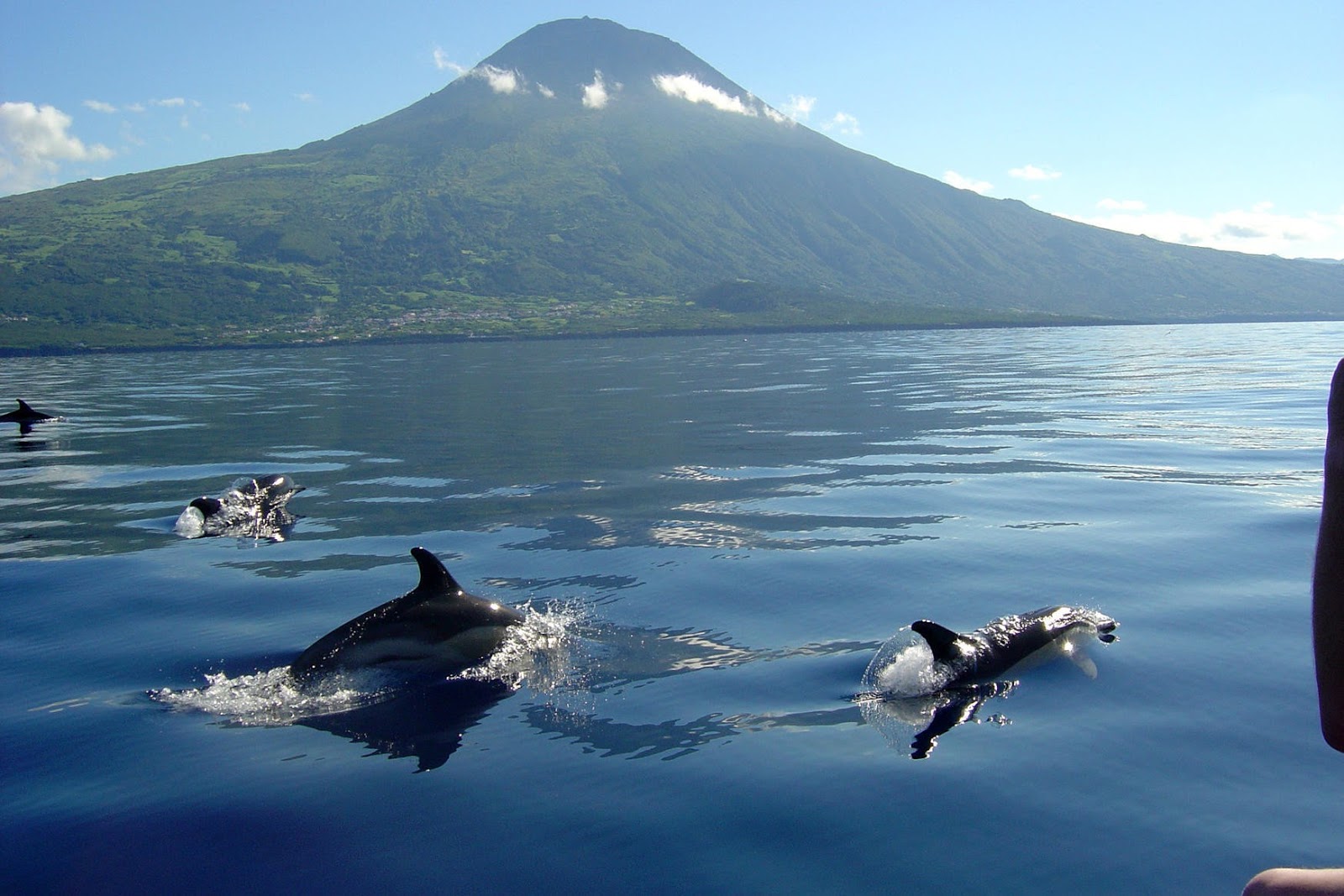
This is an incredible opportunity to engage in this activity on the island, as it is possible to closely observe some of the more than 25 species of cetaceans that inhabit the region, such as sperm whales, common dolphins, bottlenose dolphins, Risso’s dolphins, as well as summer species like spotted dolphins, pilot whales, and striped dolphins, and others typical of spring, like blue whales.
Additionally, it is a trip where tourists will learn about the importance of local preservation and how whaling transitioned into whale watching in the archipelago. If you have the opportunity, do not miss this beautiful outing and take great photos. It is worth it!
Learn more about Pico Island:
> Photos of Pico
> Videos of Pico
> Restaurants on Pico
> Companies on Pico
> Accommodations on Pico
If you are planning to travel to the Azores archipelago, do not miss a trip to Pico Island, a place filled with natural beauties and fascinating points of interest!
 Quick links and suggestions
Quick links and suggestions
Travel insurance with 15% discount for the Azores or another destination Click here to simulate >
Looking for trips to the Azores? See these promotions >
Rent a car in the Azores? The best rent-a-car >
Activities and Experiences during your stay? Check it out here >
See Whales and Dolphins? Book now online >
Have you had a canceled or delayed flight in the last 3 years? Receive your compensation here >


